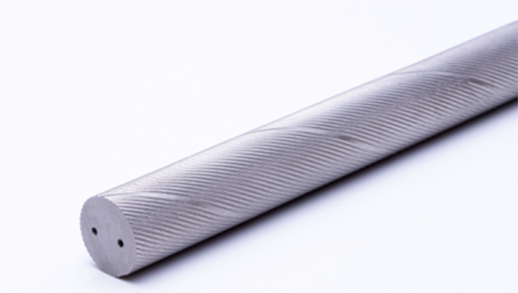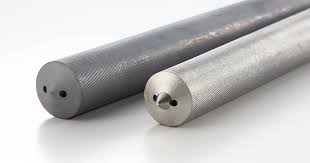Traditional Cooling solutions
Traditional cooling solutions have been relied upon for many years to dissipate heat from various systems and machinery. These methods often involve the use of fans, heat sinks, or liquid cooling systems. Fans are commonly used in computers and electronics to circulate air and prevent components from overheating. Heat sinks, on the other hand, are typically made of metal and provide a larger surface area for heat transfer.
Liquid cooling systems are another widely adopted approach for managing thermal issues. They utilize a coolant fluid that absorbs heat as it passes through the system, carrying it away from sensitive components. However, these traditional methods come with their own set of limitations.
One major problem is their limited efficiency in dissipating high levels of heat generated by modern-day technologies. As devices become more compact and powerful, they generate greater amounts of heat that can overwhelm traditional cooling mechanisms.
Additionally, traditional cooling solutions may struggle with uniform temperature distribution across complex structures or components with intricate designs. This uneven cooling can lead to hotspots and potential damage to sensitive parts.
Furthermore ,traditional cooling methods often require significant space allocation within machines or equipment which can be restrictive in certain applications where space is limited.
Given these challenges associated with conventional approaches,it's clear that there is a need for an innovative solution capable of addressing these limitations head-on. Enter Helical Coolant Hole Rods - a cutting-edge technology poised to revolutionize the world of thermal management!

The Problem with traditional cooling solutions
Traditional cooling solutions have been relied upon for decades to regulate and maintain optimal temperatures in various industries. However, they come with their fair share of problems that can hinder efficiency and productivity.
One major issue with traditional cooling methods is their lack of precision. Many systems use bulky and static cooling elements that distribute coolant unevenly, leading to inconsistent temperature control. This can result in hot spots or cold spots within the machinery, compromising its performance and potentially causing damage over time.
Another problem lies in the limited reach of conventional cooling solutions. Traditional methods often struggle to effectively cool hard-to-reach areas or complex geometries within equipment. The inability to adequately cool these critical regions can lead to overheating, reduced operational lifespan, and increased maintenance costs.
Furthermore, traditional cooling techniques typically require high volumes of coolant to be pumped into the system continuously. This not only increases energy consumption but also creates additional challenges related to coolant disposal and environmental impact.
Moreover, many conventional cooling systems are prone to clogging due to debris or contaminants present in the coolant supply lines. Such blockages restrict the flow of coolant and obstruct proper heat dissipation, resulting in reduced efficiency and potential breakdowns.
Outdated cooling methods often suffer from excessive noise levels generated by pumps or fans used for circulation purposes. These noise emissions can be disruptive for workers operating nearby machinery while also contributing negatively to overall workplace ambiance.
In light of these issues associated with traditional cooling solutions, it becomes evident why an innovative alternative like helical coolant hole rods has gained attention as a more efficient option for temperature regulation.

Introducing Helical Coolant Hole Rods
When it comes to cooling solutions, innovation is key. Traditional methods have their limitations, often falling short in terms of efficiency and effectiveness. That's where helical coolant hole rods come into play – a groundbreaking solution that revolutionizes the way we cool.
These rods are designed with a unique spiral-shaped hole running through their center. This innovative design allows for enhanced coolant flow and distribution, ensuring optimal heat dissipation throughout the system. Unlike traditional straight holes, the helical shape maximizes contact between the coolant and the surrounding components, resulting in improved cooling performance.
But how exactly do these ingenious rods work? As coolant flows through the helical channels within the rod, it creates turbulence that enhances heat transfer. The increased contact surface area facilitates faster cooling while minimizing hotspots. This means better temperature control and reduced thermal stress on critical components.
The benefits of incorporating helical coolant hole rods into cooling systems are numerous. They offer superior heat dissipation capabilities compared to traditional methods. By efficiently removing excess heat from sensitive areas such as engines or electronic devices, these rods help prevent overheating and potential damage.
Additionally, this revolutionary design promotes energy efficiency by reducing power consumption needed for effective cooling processes. In turn, this can result in significant cost savings over time for businesses operating large-scale machinery or data centers.
Furthermore, due to their optimized performance and reliability, helical coolant hole rods contribute to prolonged equipment lifespan by preventing premature wear caused by excessive heat exposure.
In conclusion,Helical coolant hole rods represent an exciting advancement in cooling technology that addresses many of the limitations associated with traditional methods. Their innovative design improves heat dissipation capabilities while promoting energy efficiency and extending equipment lifespan.
How Helical Coolant Hole Rods Work
Helical coolant hole rods may sound like a mouthful, but they are actually quite fascinating in their functionality. These innovative cooling solutions work by utilizing a unique design that enhances heat transfer and improves overall cooling efficiency.
At the core of these rods is a helical-shaped internal coolant channel that runs along its length. This channel allows for the precise flow of coolant through the rod, ensuring effective cooling throughout the entire surface area.
The helical design plays a crucial role in enhancing heat dissipation. As the coolant flows through the rod's internal channels, it creates a swirling motion within, which maximizes contact between the coolant and the heated surfaces. This increased contact leads to quicker heat absorption and removal from critical components.
Furthermore, this swirling motion also helps to break up boundary layers of air or debris that may accumulate on surfaces being cooled. By disrupting these boundary layers, helical coolant hole rods minimize hot spots and prevent uneven temperature distribution.
In addition to their efficient cooling capabilities, these rods can be customized to suit various applications. Different sizes and configurations can be used depending on specific needs, ensuring optimal performance in diverse industries such as aerospace, automotive manufacturing, or electronics assembly.
All in all, helical coolant hole rods offer an innovative solution for addressing thermal management challenges across different sectors. Their unique design greatly improves heat transfer efficiency while maintaining reliability and versatility - making them an excellent choice for anyone seeking advanced cooling solutions without compromising productivity or quality.

The Benefits of Helical Coolant Hole Rods
Increased Efficiency: One of the major benefits of using helical coolant hole rods is their ability to significantly improve cooling efficiency. The unique helical design allows for better heat transfer, ensuring that the cutting tool stays at an optimal temperature during machining processes. This leads to improved productivity and longer tool life.
Enhanced Chip Evacuation: Traditional cooling solutions often struggle with effectively removing chips from the cutting area, which can impact both the quality of the machined surface and overall tool performance. With helical coolant hole rods, this issue is minimized as the spiral-shaped holes facilitate efficient chip evacuation, preventing chip buildup and reducing the risk of clogs or damage to tools.
Improved Surface Finish: By providing a more effective cooling solution, helical coolant hole rods can help achieve superior surface finishes on machined parts. The consistent flow of coolant along the entire length of the rod ensures even distribution across all contact points between the tool and workpiece, resulting in smoother surfaces with reduced friction and surface defects.
Extended Tool Life: Heat generated during machining processes can quickly lead to tool wear and premature failure if not properly managed. https://www.diatooling.com/What-materials-are-used-to-make-helical-coolant-hole-rods.html excel in dissipating heat efficiently from high-speed cutting tools, thereby extending their lifespan by minimizing thermal stress and maintaining optimal working conditions.
Versatility: Another advantage is that helical coolant hole rods are compatible with various materials like steel, aluminum, titanium alloys, etc., making them suitable for a wide range of applications across different industries such as automotive manufacturing, aerospace engineering, medical device production, among others.
Cost-Effective Solution: While initial investment costs may be higher compared to conventional cooling methods due to specialized equipment requirements (such as machines capable of delivering high-pressure coolants), over time they prove cost-effective through increased productivity gains from reduced downtime due to less frequent tool changes and enhanced operational efficiencies.
Helical coolant hole rods offer numerous benefits, including improved cooling efficiency, enhanced chip evacuation, superior surface finish, extended.

Conclusion
The demand for innovative cooling solutions continues to grow as industries strive for improved efficiency and productivity. Traditional cooling methods often fall short in meeting these evolving needs, leading to various challenges such as heat dissipation issues and reduced tool life.
However, with the introduction of Helical Coolant Hole Rods, a new era of cooling solutions has emerged. These revolutionary rods utilize helical coolant holes that provide superior coolant flow directly at the cutting edge of tools. By effectively directing coolant to where it is needed most, Helical Coolant Hole Rods ensure optimal temperature control during machining processes.
The benefits of utilizing Helical Coolant Hole Rods are undeniable. With improved heat dissipation capabilities and extended tool life, manufacturers can experience increased productivity and cost savings over time. Additionally, by reducing thermal damage to workpieces and enhancing chip evacuation, these rods contribute to higher quality finished products.
As industries continue to seek innovative ways to enhance their manufacturing processes, Helical Coolant Hole Rods offer a promising solution for efficient cooling in machining operations. With their ability to optimize temperature control while increasing productivity and improving tool longevity, it's no wonder these rods are gaining popularity among manufacturers worldwide.
So why settle for traditional cooling methods when you can embrace the power of Helical Coolant Hole Rods? Browse the Diatooling website and experience the difference firsthand!
